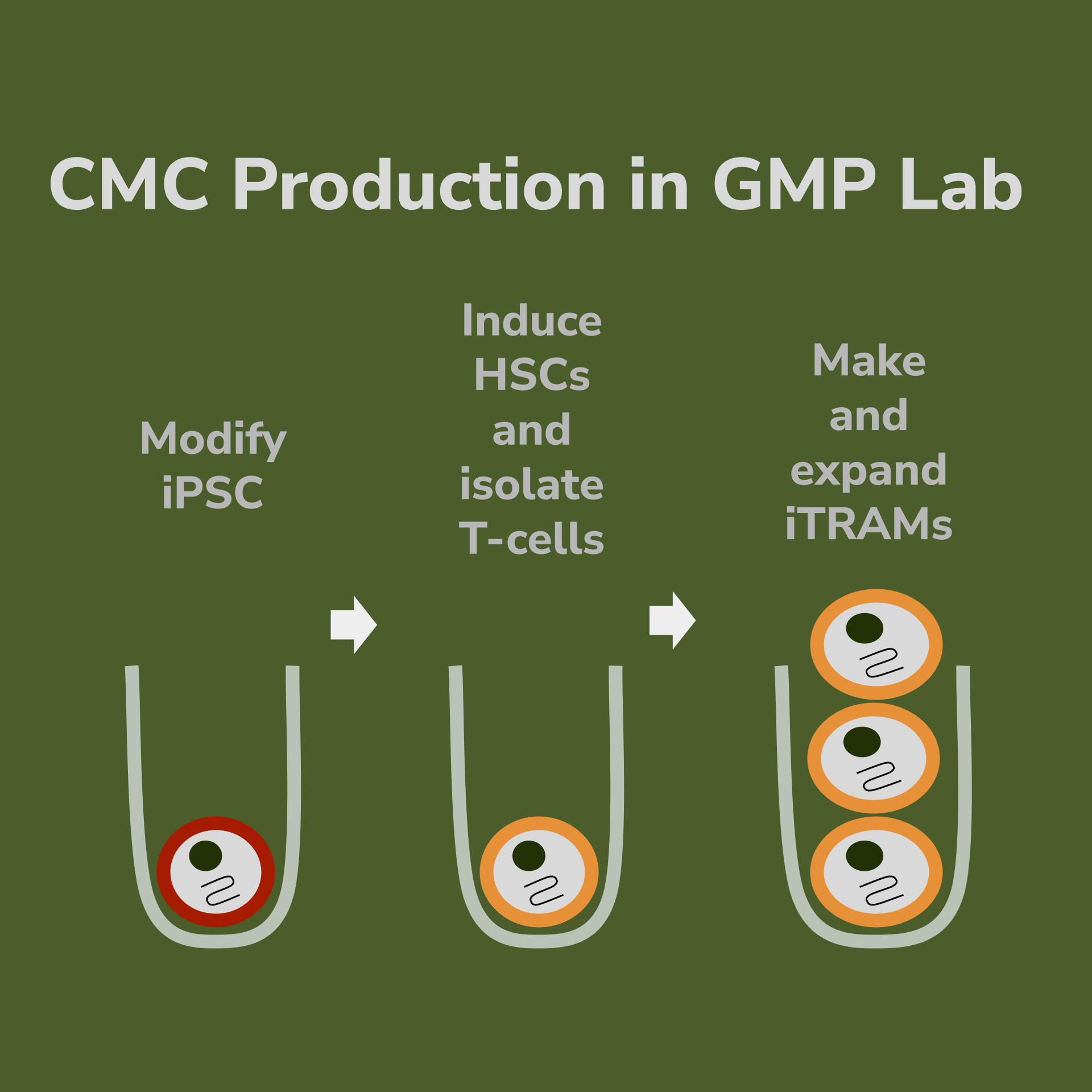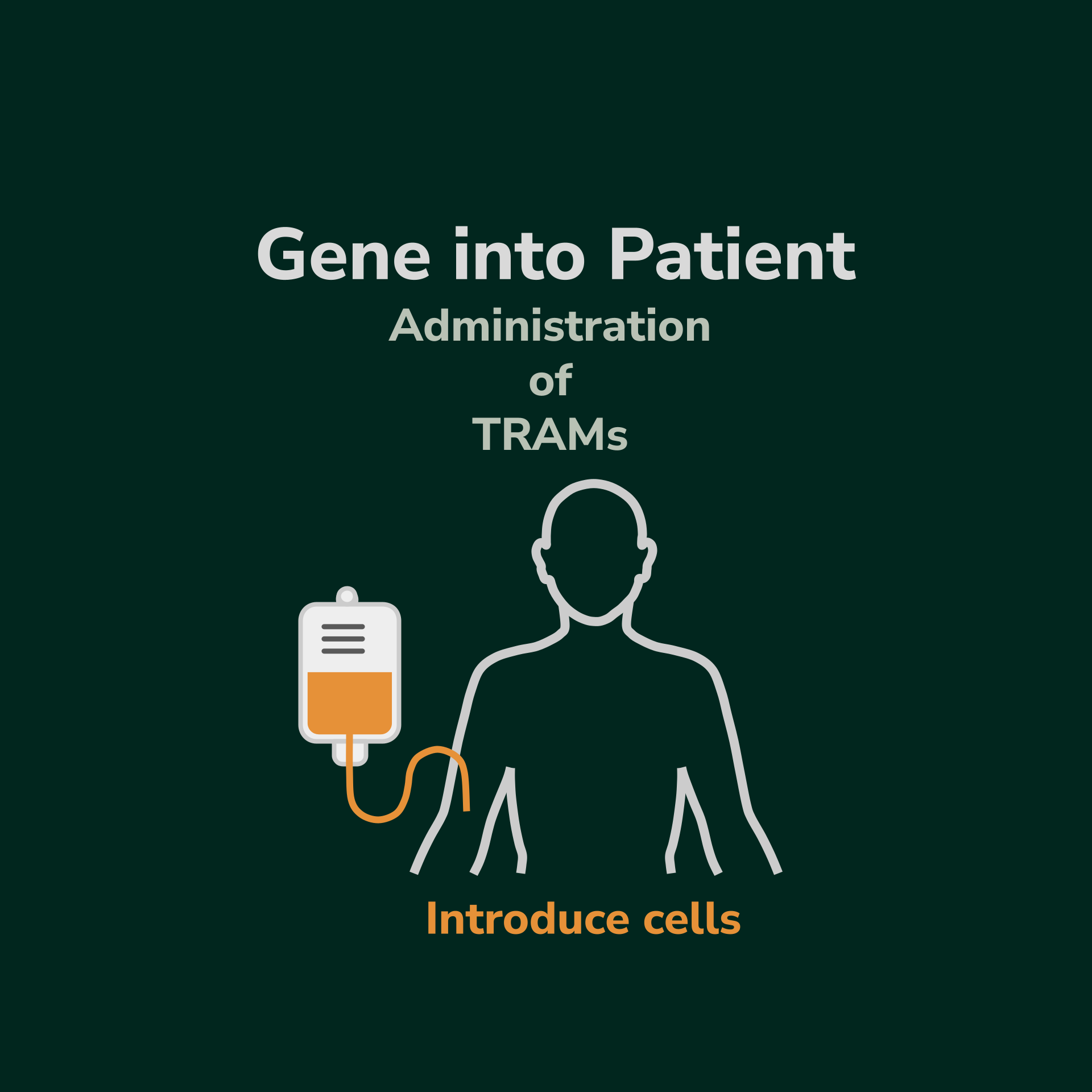iTRAM Technology
iTRAMs - iPSC-derived TRAMs are health donor T-cells genetically engineered to provide durable enzyme replacement. Conceptually, iPSCs can be engineered to express a transgene and rendered hypo-immunogenic using a variety of modern genetic engineering methodologies. Once made, these cells can be biobanked for future transfusion use.
SCID iTRAM Program (ADA: adenosine deaminase):
Treating severe combined immunodeficiency disease caused by ADA deficiency - a condition affecting over 20,000 persons worldwide
iTRAM Therapy
Our Program in iTRAM technology uses the application of our TRAM technique to induced-pluripotent-stem-cells (iPSCs). Like TRAM therapy, it provide a cellular gene therapy (CGT) for achieving continuous enzyme replacement. However, the cells used for genetic engineering are derived from a healthy donor tissue (allogenic-derived). These donor-derived iPSCs are gene edited to disrupt the T cell receptor beta and human leukocyte antigens (HLA). Gene insertion techniques are then used to bring in a transgene cargo into a well-defined safe harbor site. Finally the cells are differentiated into HSCs and various tissue types (T cells and others) are generated and biobanked for future use in patients.
The iTRAM procedure involves harvesting iPSC from healthy donor.
iPSCs are modified to remove HLA genes and transgene is inserted.
iPSCs are induced into HSCs and then T-cells are isolated.
Rapamycin exposure is used to make iTRAMs and the population is expanded.
The iTRAM population is transfused back into the patient where they systemically spread and perdure.
The iTRAMs technology confers many benefits. It allows engineering of cells in primordial state so that clonal populations of exacting content can be isolated. The use of safe harbor site for transgene insertion effectively removes any risk of insertional oncogenesis. Finally, the iTRAM technology offers a renewable source of cells that can be biobanked and used on a variety of patients - a cost savings that increases democratized access to the CGTs.





